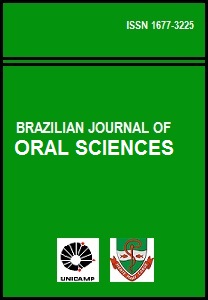Abstract
Biomaterials such as membrane barriers and/or bone grafts are often used to enhance periapical new bone formation. A combination of apical surgery and these biomaterials is one of the latest treatment options for avoiding tooth extraction. In case of periapical lesions, guided tissue regeneration (GTR) is attempted to improve the self-regenerative healing process by excluding undesired proliferation of the gingival connective tissue or migration of the oral epithelial cells into osseous defects. In many cases, GTR is necessary for achieving periodontal tissue healing. This report describes the healing process after surgery in a challenging case with a long-term followup. In this case report, endodontic surgery was followed by retrograde sealing with mineral trioxide aggregate (MTA) in the maxillary right central incisor and left lateral incisor. Apicectomy was performed in the maxillary left central incisor and a 1-mm filling was removed. The bone defect was filled with an anorganic bone graft and covered with a decalcified cortical osseous membrane. No intraoperative or postoperative complications were observed. After 13 years of follow-up, the patient showed no clinical signs or symptoms associated with the lesion and radiographic examination showed progressive resolution of radiolucency. In conclusion, the combination of apical surgery and regenerative techniques can successfully help the treatment of periapical lesions of endodontic origin and is suitable for the management of challenging cases.
This work is licensed under a Creative Commons Attribution 4.0 International License.
Copyright (c) 2015 Pedro Felício Estrada Bernabé, João Eduardo Gomes Filho, Eloi Dezan Júnior, Annelise Katrine Carrara Prieto, Renata Oliveira Samuel, Luciano Tavares Angelo Cintra
Downloads
Download data is not yet available.

